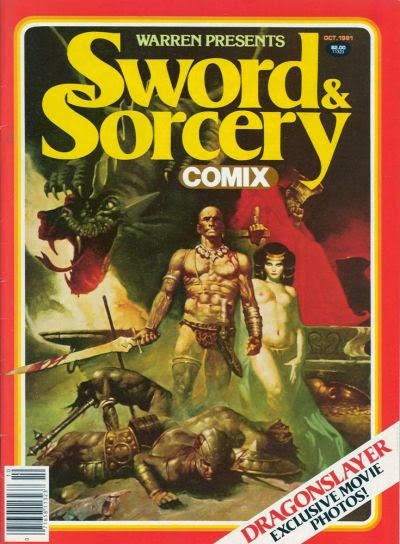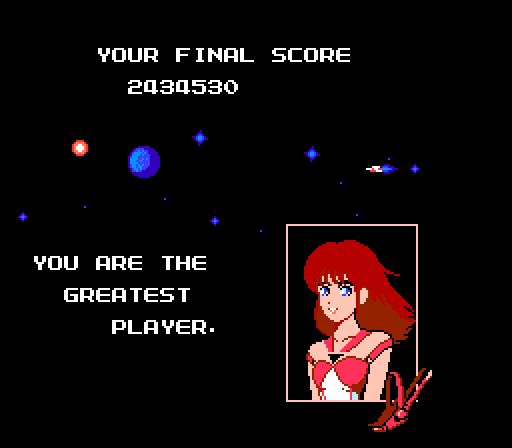 |
| "I can't believe people still listen to me." |
That's right. Not only is Anita two years behind schedule, she apparently decided that "Positive Female Characters" should be it's own series that she will do... before completing the Tropes Vs Women in Video Games series. Anyway, her premiere episode in this new series talks about the Scythian from the game Sword and Sorcery.
Oh wait, that's not it.
That's not it either.
Someone's screwing with me aren't they.
THERE we go. Sword and Sorcery is an indie game (as you can tell) made in 2011 by Capybara Games, known for several handheld and mobile games, and Superbrothers, known for nothing other than this. The plot is ripped straight from Zelda telling the story of a protagonist on a quest seeking the magical triangles of power. Hey this isn't just my word for it, Anita says so herself. In fact, I have no history or interest in this game. It seems like the sort of game you play through once, see everything the game has to offer, had fun, forget about it, and then see all these hipsters go on and on about how "Art" it is. But there are a few things that Anita says about the game that interest me.
One, she says, as a positive, that the controls are incredibly simple. Why is that necessarily a positive? From what is displayed the game is entirely point and click, does that mean that games are BETTER if they are controlled via "Point and Click"? What if I like games with more complexity to the gameplay that require more complex controls? Now I'm not saying the opposite, that simple controls to a game is a bad thing, it all depends on the game itself and whether or not the given control scheme words with the gameplay. It's just that insinuating that "simple controls make the game better" seems to say something about Anita's intended audience.
And two, she says that in contrast to most adventure games and RPGs where your character "Level Up" and get stronger as the game progresses, in Sword and Sorcery the protagonist gets weaker in the later stages of the game. This is an interesting concept for a game, as Anita points out, that this demonstrates the adventure is taking it's toll on the adventurer and creates and interesting dynamic. See, the reason why "Level Ups" exist in video games is all to do with the hero's journey. They start out as someone of little or no importance, but through overcoming their trials they become stronger and more heroic, ultimately culminating in doing something that they would be incapable of on the outside of their journey. It is also to create a gameplay "mechanic" that simulates real life. The more you train your body or mind the stronger your body and sharper your mind or the more you do a particular activity the more skilled you are at it. To show that the character is getting better and not just the player, they demonstrate this by having the character gain "Experience Points" culminating in a "Level Up" and thus an improvement to their "Stats." However, since games need to be more challenging the later on in the story, the difficulty found is that, while the heroes are more powerful than they where at the start, the challenges they face are even more powerful than that.
HERE on the other hand we have a hero who getting weaker as the story goes on. In this case the gameplay mechanic being demonstrated is more fatigue and injury than conditioning. The challenge is that later on in the game, you are more weak and thus the same enemies, or even harder enemies, are more challenging as you don't have any more room for mistakes. Now while Anita calls this a positive, I just call it interesting. See not everyone wants to play a game where their player avatar is progressively getting beaten down. I like playing games where my character is getting stronger, so that when I face off against an enemy that I once had difficulty killing, I can actually SEE how far I have progressed. This is why I have a problem with games that scale the enemy encounters with your level. It just doesn't feel like I'm getting stronger when the entire world is getting stronger with me.
But of course the reason she is talking about this game isn't really because of the gameplay, it is because of the protagonist. The Scythian as she is called, and the first character Anita officially declares a "Positive Female Character" so let's look at her.
Ummm. Umm... Are we sure this is a woman? It looks like a blob of pixels in the vague shape of a humanoid. Well apparently this is a woman. How do we know this? Because the in game text refers to her as a "She." That's it. That's all. Her entire feminine appearance can be easily nullified with just a single typo. Anita champions this character as a "Positive Female Character" not because of her complex backstory. She has none. Anita doesn't champion her because of an unique personality. She has none. Anita doesn't even champion her because she deals with unique "feminine" issues. Her quest is no different from Link's. No, Anita champions the Scythian because, she's a woman and the game doesn't make a big deal about it. I kid you not. Anita thinks she is a positive female character only because she is a woman and the game doesn't make a deal out of it. I'm really having trouble trying to figure out how this isn't sexist, but beyond that the Scythian isn't the only female character like this.
Samus Aran, a female character that Anita has ignored up until this point (and dismissing her because of Justin Bailey), is a character who, up until Metroid Other M, was female and no one made a big deal about it. True, you got to see her in her "Zero Suit" when you complete the game in record time, but that turned her into one of the greatest female heroines of all video game history. Like the Scythian, looking at her original video game sprite, you can't tell the gender of the character, and since gaming was a predominately male hobby most gamers assumed Samus was a man. When they beat the original Metroid and Samus was revealed to be a woman, the reaction wasn't, "She's a chick? Eww, I was playing as a girl all this time!" the reaction was more like, "She's a woman? And she killed all those alien monsters? SHE IS SO KICKASS!"
And Samus wasn't the only female character. In 1988, the original Phantasy Star was released for the SEGA Master System, and who was the protagonist of that game? Alis Landale, a girl who not only lead her entire party but also wasn't hidden behind a Varia Suit. Also released a year later for the NES was a little known but cult classic game called The Guardian Legend, a hybrid game of 2D scrolling shooter, and Zelda like Adventure starring a cyborg that can turn from a humanoid soldier into a fighter jet. This cyborg was also female and has more distinctly female sprite than either Samus or the Scythian.
The point here is that Anita tries to make the Scythian out to be this great achievement in female character depiction, a revolutionary idea that a main character can be female and the game can just move on without making that the focus of the plot. And I don't deny that, a good character is a good character regardless of gender (by the same token a bad character is STILL a bad character no matter the gender); however, the Scythian isn't a pioneer of characters how just happen to be female. She is stripped of that title by characters who predate her by over 20 years, and these are just the earliest examples I can think of off the top of my head. There are SEVERAL female protagonists throughout gaming history, and so many of these character has something that the Scythian doesn't have: Personality, Motivation, Backstory, and most of all Character. And even if some characters Anita might find "Problematic" (like Bayonetta and the entire cast of Senran Kagura) they are still strong female protagonists, and provide more personality and perspective than the Scythian can. The Scythian is just lacking.
Until Next Time.
-CRES, yes even the Guardian from Guardian Legend has more personality. I mean, just look at her.







No comments:
Post a Comment